Welcome to the enchanting world of Morocco Greenhouse Farming, where sustainability meets innovation! With its diverse landscapes and climate, Morocco has embraced the concept of greenhouse farming to revolutionize its agriculture. These controlled environments enable year-round cultivation of crops, mitigating the impact of seasonal fluctuations and water scarcity. Embracing eco-friendly practices, these greenhouses utilize renewable energy sources, reducing their carbon footprint.
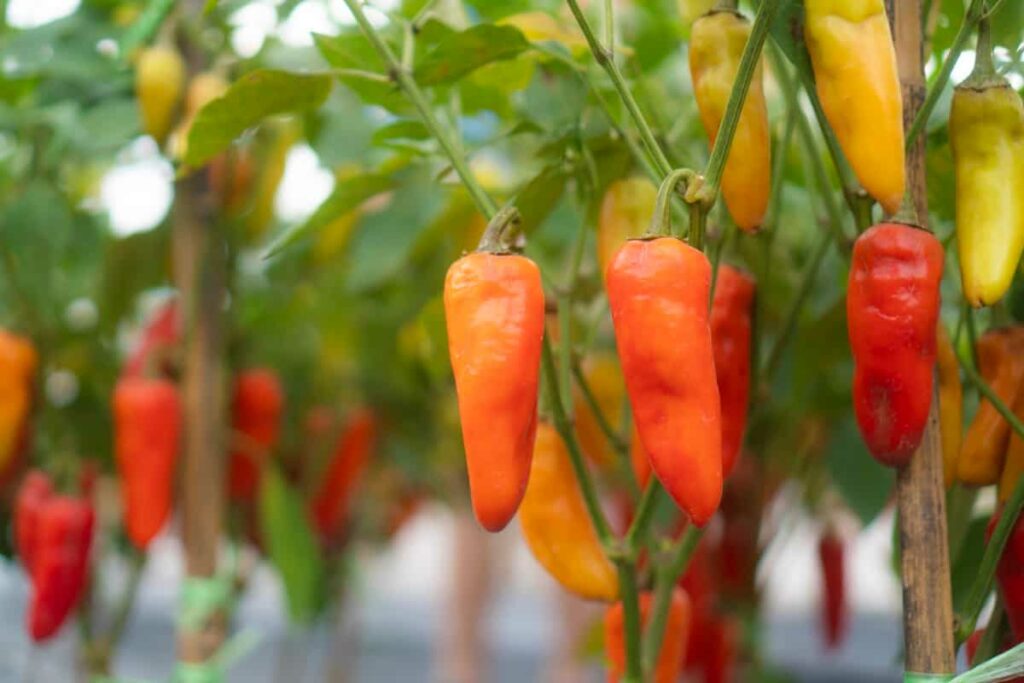
Morroco Greenhouse Farming
What is Moroccan Greenhouse Farming?
Moroccan Greenhouse Farming is an innovative agricultural practice involving cultivating crops in controlled environments. These greenhouses are equipped with advanced technologies to regulate temperature, humidity, and light, creating ideal conditions for plant growth. This method allows farmers to extend the growing season, ensuring a year-round fresh produce supply.
Morocco’s diverse climate, ranging from coastal to mountainous areas, makes greenhouse farming even more vital to ensure stable crop production. The country has embraced eco-friendly approaches in greenhouse operations, incorporating renewable energy sources like solar power to minimize environmental impact.
Production of Greenhouse Tomatoes in Morocco
Morocco’s greenhouse tomato production faces both strengths and challenges. Over 5000 hectares are dedicated to greenhouse tomatoes, with large-scale companies and professional management. However, the focus remains low-cost and low-tech. The production level hovers around 250-300 tons per hectare, with a first-quality rate of 60-65%.
While the excellent growing climate is an advantage, factors like water scarcity, reliance on soil-based cultivation, and the impact of weather conditions on crop protection pose challenges. To improve quality and production, innovative steps are necessary. Economic and technically feasible methods should be environmentally sustainable, benefiting the community and the market.
Implementing substrate-based cultivation, irrigation recirculation, and modern greenhouse structures can lead to significant improvements. Controlling climate through heating, ventilation, and cooling is essential for optimal plant health and productivity. Rainwater collection and smart irrigation practices can address water challenges.
In case you missed it: Exploring the Innovative Techniques of Australian Greenhouse Farming
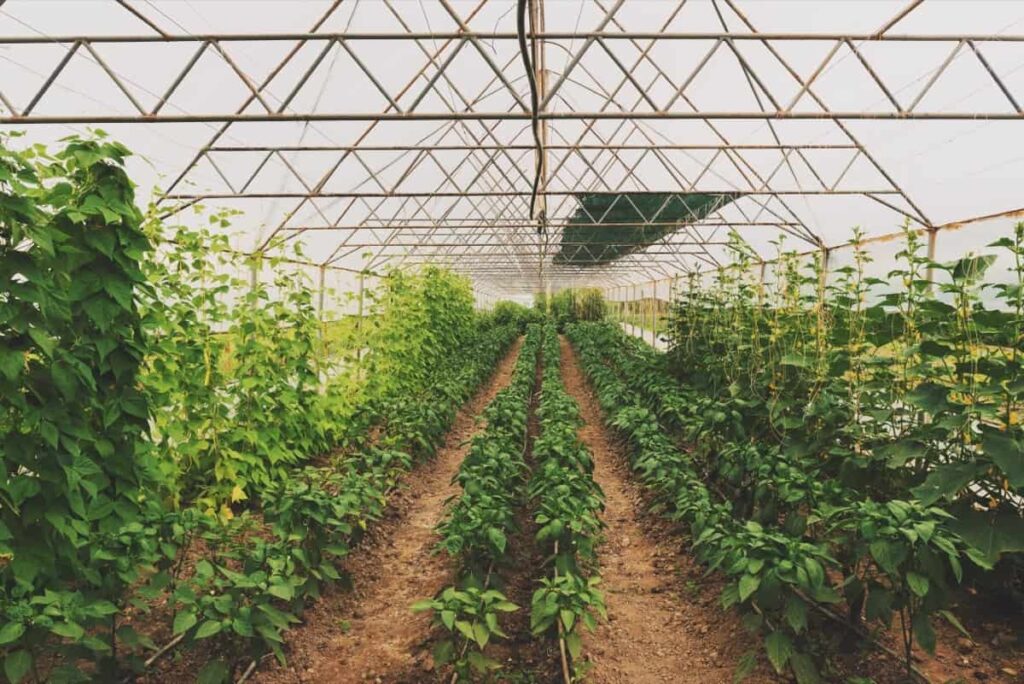
By embracing advanced practices, Morocco can enhance greenhouse tomato production, increase yields, improve fruit quality, and strengthen its position in the competitive market. Active greenhouse climate management with high-tech tools presents a profitable path for the country’s greenhouse future.
Types of Greenhouses in Morocco
- Canary-type greenhouses are the most common type of greenhouse in Morocco. They are made of metal or wood and covered with plastic. These greenhouses are typically long and narrow, with a single roof that slopes down to the ground.
- Single-span tunnels are another common type of greenhouse in Morocco. They are made of metal or plastic and covered with a single layer of plastic. These greenhouses typically have flat roofs and are shorter and wider than Canary-type greenhouses.
- Multi-span tunnels are similar to single-span ones but comprise multiple connected units. This allows for a larger growing area but requires more maintenance.
- Gothic-arch greenhouses are a more recent type of greenhouse that is becoming increasingly popular in Morocco. They are made of metal or wood and covered with a double layer of plastic. These greenhouses have a distinctive arch-shaped roof allowing better light penetration and ventilation.
- A-frame greenhouses, made of wood or metal and covered with plastic, are easy to build and maintain, suitable for small-scale growers. Quonset greenhouses, made of steel and plastic, are strong, durable, and suitable for large-scale growers.
- They can withstand high winds and snow loads but can be more expensive and difficult to build. High-tech greenhouses, equipped with sensors and controls, are highly efficient and can grow various crops, but they are also the most expensive option.
Greenhouse Farming Techniques in Morocco
Greenhouse Farming in Morocco involves utilizing cutting-edge techniques to optimize agricultural practices within controlled environments. These greenhouses are equipped with automated systems that maintain ideal conditions for crop growth, including temperature, humidity, and irrigation.
Farmers can monitor and adjust these factors through precision farming to ensure maximum yield and produce quality. Morocco’s geographical diversity influences the choice of greenhouse designs, with the most common types being the Venlo and the Arched Roof. Additionally, renewable energy sources like solar panels are incorporated to power these greenhouses, reducing their carbon footprint and promoting sustainability.
In case you missed it: From Seed to Supermarket: Mexico Greenhouse Farming
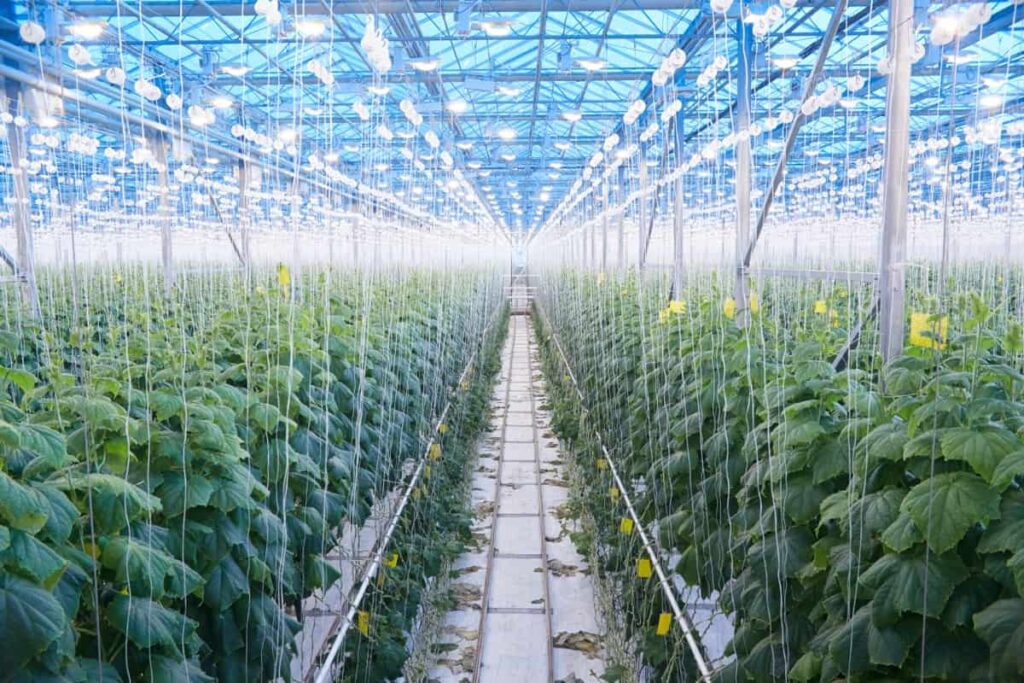
Water conservation techniques like drip irrigation systems are also widely employed, as water scarcity can be challenging in some regions. The combination of advanced technology and eco-friendly practices has made Moroccan Greenhouse Farming a model of efficiency and environmental responsibility, contributing to the nation’s food security and economic development.
Sustainable Practices in Moroccan Greenhouse Farming
Moroccan greenhouse farming practices prioritize environmentally friendly methods to promote long-term viability, food security, and economic prosperity. Advanced irrigation systems, rainwater harvesting, and renewable energy sources like solar power reduce the carbon footprint and dependency on conventional energy. Crop rotation and organic fertilization methods maintain soil health and fertility, while Integrated Pest Management (IPM) employs natural predators and biological control agents to minimize chemical pesticide use.
Waste management is prioritized by recycling organic matter, adopting responsible disposal techniques, reducing environmental pollution, and contributing to the circular economy. Social sustainability initiatives in greenhouse farming aim to create job opportunities, provide vocational training for local communities, boost the rural economy, and empower the workforce.
Climate Control Systems for Moroccan Greenhouses
In Moroccan greenhouses, climate control systems are essential to ensure optimal crop growing conditions, regardless of external weather fluctuations. These advanced systems use technologies to regulate temperature, humidity, and ventilation within the greenhouse environment.
Temperature control is achieved through automated heating and cooling systems, while humidity control prevents excessive moisture and ensures sufficient humidity for plant growth. Various climate control methods are employed in Moroccan greenhouses, including fan and pad systems, evaporative cooling, and shading techniques.
Evaporative cooling lowers the temperature inside the greenhouse while shading techniques regulate sunlight exposure and prevent damage. Automation plays a significant role in these systems, with sensors constantly monitoring environmental conditions and adjusting settings accordingly. Some greenhouses also integrate computer-controlled systems for remote monitoring and control.
Efficiency is a key aspect of climate control in Moroccan greenhouses, as using renewable energy sources like solar panels reduces reliance on traditional energy grids and contributes to environmental sustainability. Properly managed climate control boosts crop productivity and quality and minimizes resource waste, making it an essential factor in the success of greenhouse farming in Morocco.
In case you missed it: Profitable Organic Eggplant/Brinjal Cultivation in West Bengal: A Production Guide for Beginners
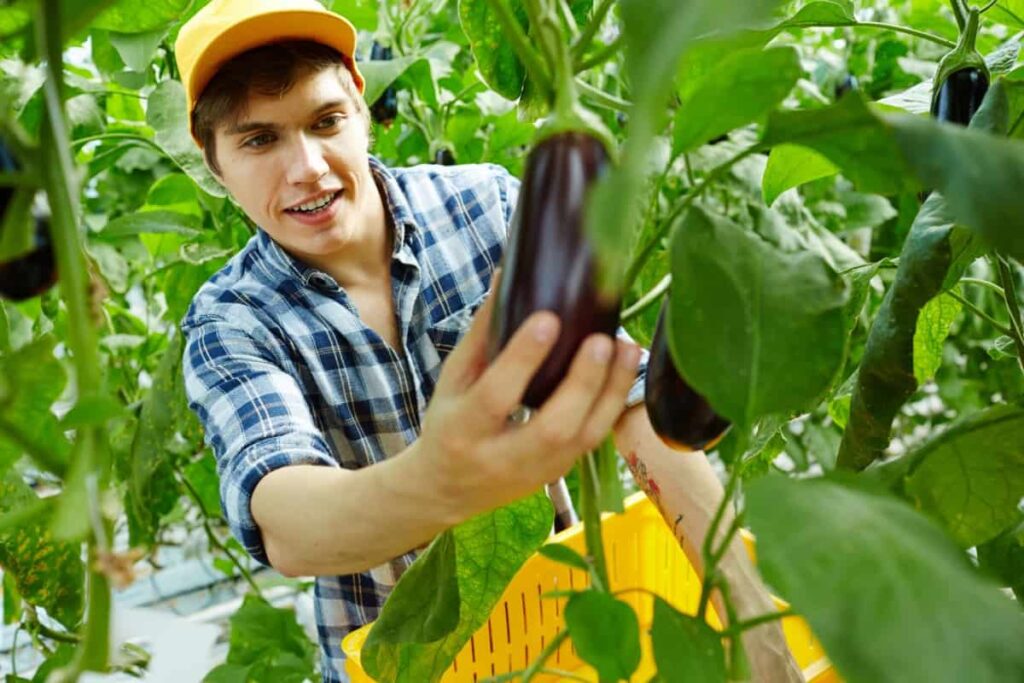
Crop Selection for Moroccan Greenhouse Farming
Moroccan Greenhouse Farming relies on careful and strategic crop selection to ensure successful cultivation and maximize yields. Factors such as local market demand, climate conditions, and water availability play a significant role in crop selection. Heat-loving crops like tomatoes and peppers are popular in Morocco due to its warm climate. Water availability is another critical consideration, with some regions facing water scarcity.
Crop rotation and diversification are practiced to maintain soil health and prevent pest and disease buildup. Farmers rotate between different types of crops to balance nutrient depletion and enhance productivity. Some crops are chosen for their short growth cycles, allowing multiple harvests throughout the year, ensuring a continuous supply of fresh produce and better financial returns for farmers.
Moroccan Greenhouse Farming also encourages the cultivation of traditional and indigenous crops, preserving biodiversity and cultural heritage. These crops have adapted well to the local climate and offer unique flavors and nutritional benefits. Organic farming methods are adopted to support sustainable practices, reducing synthetic pesticides and fertilizers and promoting healthier produce for consumers.
Pest and Disease Management in Moroccan Greenhouse Farms
Pest and Disease Management in Moroccan Greenhouse Farms is crucial to ensure optimal crop health and yield. Greenhouses create a controlled environment, but pests and diseases can still pose significant threats. Integrated Pest Management (IPM) strategies are commonly employed, combining various techniques for effective control.
These include biological controls, such as introducing beneficial insects to prey on pests, and cultural practices, like crop rotation and proper plant spacing. Additionally, physical barriers like nets and traps can help prevent pest infestations. Regular monitoring and early detection are essential to identify issues promptly and take appropriate actions.
Using resistant crop varieties and maintaining strict hygiene in the greenhouse also aid in disease prevention. By implementing a comprehensive pest and disease management approach, Moroccan greenhouse farmers can minimize chemical pesticides, protect the environment, and ensure healthy, high-quality produce.
Greenhouse Automation Technologies in Morocco
Greenhouse Automation Technologies in Morocco are revolutionizing the way agriculture is practiced. These cutting-edge systems utilize advanced sensors, actuators, and control systems to create a highly efficient and precise environment for crop cultivation. Automated climate control is key, regulating factors like temperature, humidity, and ventilation to ensure optimal growing conditions. This maximizes yields and reduces energy consumption, making it environmentally friendly.
Watering and irrigation processes are also automated, providing crops with the right amount of water at the right time. This prevents water wastage and helps tackle water scarcity challenges in some regions of Morocco. Moreover, automated nutrient delivery systems ensure plants receive the necessary nutrients in the correct proportions, promoting healthy growth and minimizing nutrient waste.
In case you missed it: Common Tomato Pests and Diseases: Prevention, Treatment, and Control Management
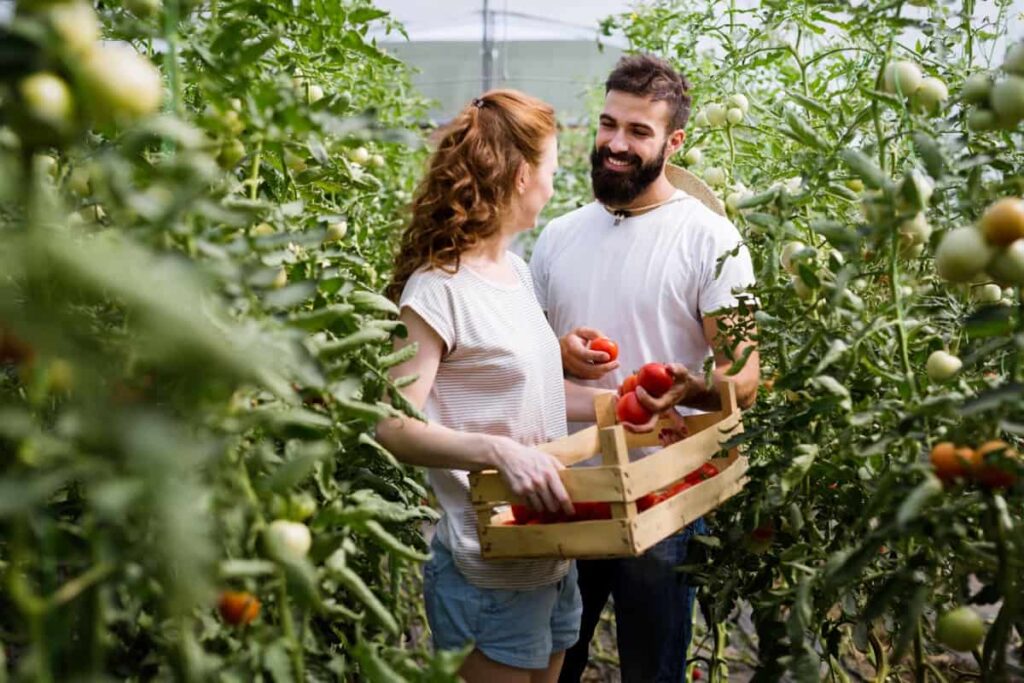
Automation also extends to monitoring and managing pest and disease outbreaks. Integrated Pest Management (IPM) techniques are integrated into these systems, allowing for early detection and targeted interventions, reducing the need for harmful chemical pesticides. Greenhouse automation technologies in Morocco are also designed to collect and analyze data on crop performance, allowing farmers to make data-driven decisions for improved productivity.
Energy-efficient Practices in Moroccan Greenhouse Farming
Moroccan greenhouse farming promotes sustainable agriculture by reducing energy consumption and minimizing environmental impact. Key strategies include integrating renewable energy sources like solar panels, abundant sunlight, and smart climate control systems to optimize energy usage.
Insulation and energy-efficient glazing materials reduce heat loss, while LED lighting reduces electricity consumption while providing the necessary light spectrum for plant growth. These practices aim to minimize the environmental impact of greenhouse operations and ensure optimal plant growth conditions.
Government Regulations for Greenhouse Farming in Morocco
In Morocco, the government has implemented specific regulations to support and regulate greenhouse farming practices. These regulations aim to promote sustainable agriculture and ensure the efficient use of resources. For instance, there are guidelines regarding the use of water and the adoption of water-saving technologies in greenhouse operations.
The government encourages the integration of renewable energy sources, such as solar power, to reduce greenhouse gas emissions and promote energy efficiency. Additionally, there are rules in place to control the use of pesticides and ensure the safe handling and disposal of agrochemicals to protect both the environment and consumer health. The government also supports research and development in greenhouse farming technologies and incentivizes farmers to adopt modern, eco-friendly practices.
Market Trends and Opportunities in Moroccan Greenhouse Farming
Moroccan greenhouse farming is experiencing a promising outlook due to the increasing demand for fresh farm produce domestically and internationally. Consumers increasingly seek locally grown, pesticide-free, high-quality produce, which greenhouses can efficiently provide. Morocco’s favorable geographical location and climate make it an ideal environment for year-round cultivation and multiple harvests, enhancing its competitiveness in off-season markets.
The government’s support and investment in sustainable agriculture practices, including greenhouse farming, further boost the industry’s growth. Initiatives to improve water and energy efficiency and promote eco-friendly approaches also attract farmers and investors.
The expansion of export markets and increasing interest in organic produce provide further opportunities for Moroccan greenhouse farmers to capitalize on the growing demand for premium and environmentally conscious products. As market trends favor sustainable and efficient farming, Moroccan greenhouse farming is poised for significant growth and prosperity.
Morocco’s Greenhouse Future
Morocco’s Greenhouse Future is promising as the nation embraces sustainable agricultural practices. Moroccan farmers can optimize resource use and reduce environmental impact by implementing advanced technologies like hydroponics, aeroponics, and greenhouse automation.
The integration of renewable energy sources contributes to energy efficiency. Morocco’s commitment to innovation and research in greenhouse farming positions the country as a leader in sustainable agriculture. Focusing on eco-friendly practices, crop diversification, and improved pest and disease management, Morocco’s greenhouse future aims to create a greener and more resilient agricultural landscape.
In case you missed it: How to Grow Jalapeno Peppers from Seed: A Step-by-Step Guide for Types, Seed Germination, and Planting
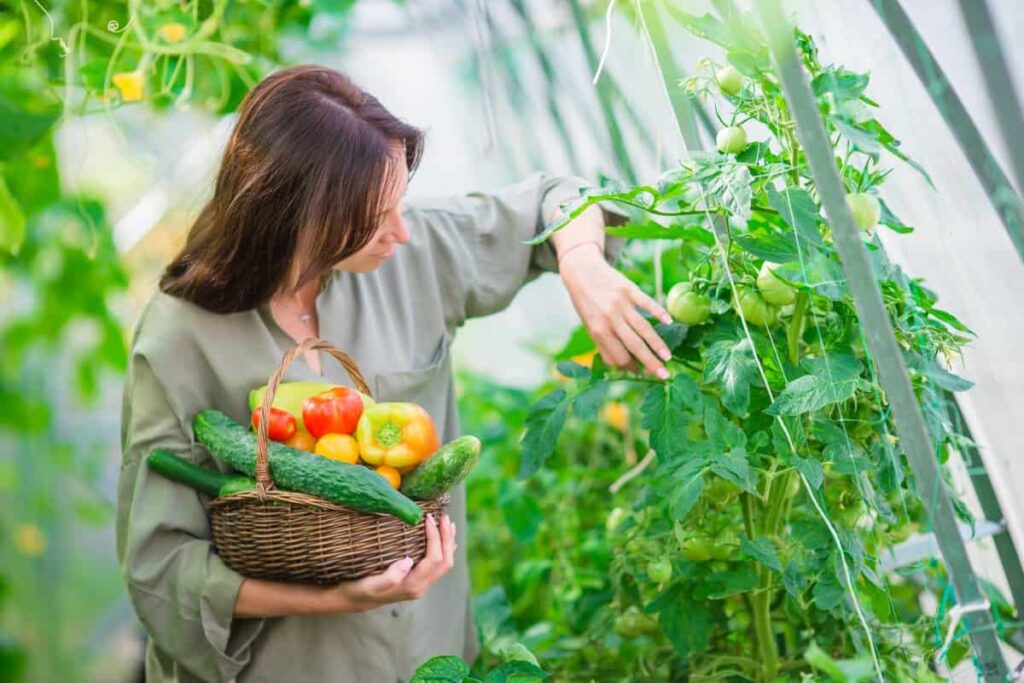
Morocco’s Greenhouse Challenges
Morocco’s Greenhouse Challenges present unique hurdles in its quest for sustainable agriculture. Water scarcity is a major concern, especially in certain regions, necessitating careful water management strategies to ensure efficient irrigation in greenhouses. Additionally, energy costs pose a challenge as conventional energy sources impact greenhouse operations’ overall sustainability.
Balancing the use of technology and reducing energy consumption is crucial. Furthermore, greenhouse pests and diseases demand constant vigilance and integrated pest management practices to protect crops effectively. Proper waste management and recycling also require attention to minimize the environmental impact.
Conclusion
Morocco’s Greenhouse Farming holds immense potential to address food security, sustainability, and environmental challenges. Embracing advanced technologies and eco-friendly practices will pave the way for a thriving and resilient agricultural sector.
- How to Raise Pigs in Your Own Backyard: A Comprehensive Guide
- Budget Friendly Sheep Shed Ideas: Cheap and Low-Cost Tips
- How Much Do Cattle Farmers Make: Revenue Streams in Cattle Farming
- Management Pests and Diseases in Your Cotton Field
- Sheep Farming Business Plan for Beginners
- Aquaponic Farming at Home: A Step-By-Step Guide
- Profitable Village Farming Business Ideas in 2024
- High-Yield Aquaculture: Fast-Growing Fish for Farming
- Effective Fish Pond Construction Techniques for Beginners
- Irrigation and Water Management in Pineapple Farming
- Blossom to Harvest: Mastering Flowering and Pollination in Papaya Farming
- Pig Fattening Essentials: From Selection to Sale for Beginners
- Raising Wagyu Cattle: A Complete Guide for Premium Beef Production
- Soil Types and Their Water Holding Capacity
- Optimizing Irrigation Schedules for Coconut Groves for Enhanced Yield
- Espresso Your Garden: Coffee Grounds for Healthier Acid-Loving Plants
- The Best Soil Mix for Snake Plants: How to Mix Your Own Snake Plant Soil
- Green Thumb Success: Expert Tips for Cultivating Greenhouse Beans All Year Round
- Bloom All Year Round: The Ultimate Guide to Indoor Hyacinth Care
- Eco-Friendly Gardening: How to Make Liquid Fertilizer from Kitchen Waste
- Ultimate Guide to Grow Anise in Pots: Explore Seed Propagation to Harvesting
- Guide to Raising Chester White Pigs: Discover Breed Facts to Growth Management
- Mastering the Elegance: The Ultimate Guide to Weeping Cherry Tree Care, Planting, and Maintenance
- Ultimate Guide to Planting Garlic in Grow Bags: Growing Strategies for Beginners
- How to Fix Spider Plant Leaf-Related Problems: Natural and Organic Remedies
- 10 Reasons Why Your Tulsi Plant is Shedding Leaves: Home Remedies and Solutions
- Optimizing Growth and Yield: The Advantages of Palm Bunch Ash Fertilizer
- Utilizing Neem Oil Extract as a Natural Pesticide for Hydrangea
- From Soil to Harvest: Various Ways in Which Farmers Can Use AI Tools
- Steps to Encourage and Induce Citrus Flowers: A Comprehensive Guide
- How to Fix Snake Plant Leaf-Related Issues: Natural and Organic Remedies
- Transform Your Garden into a Fragrant Oasis with Raat Ki Rani (Night Blooming Jasmine)
- Discover the Ideal Chicken Breeds for Philippine Farms
- How to Create a Poultry Egg Farm Business Plan for Profits
- Grow Lemon Cucumbers Like a Pro: Insider Techniques for Bountiful Yields
- Ultimate Guide to Caring for Your Pink Princess Philodendron: Tips for Thriving Variegation
